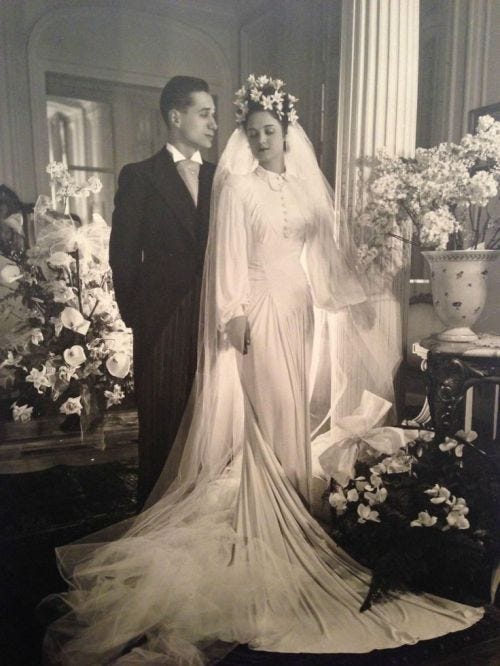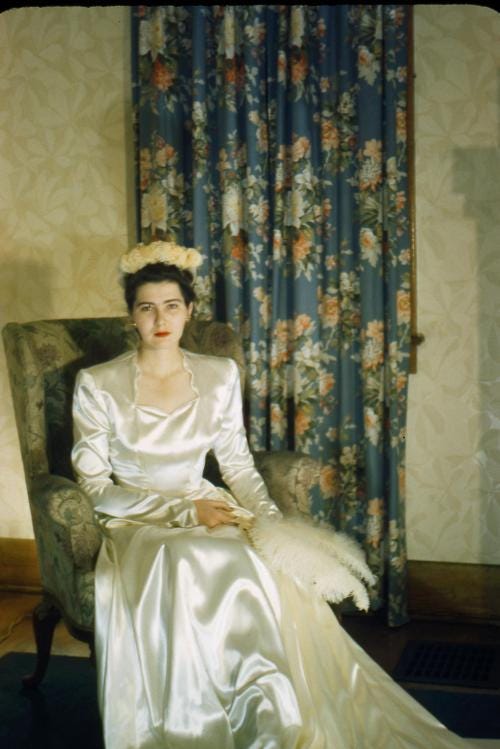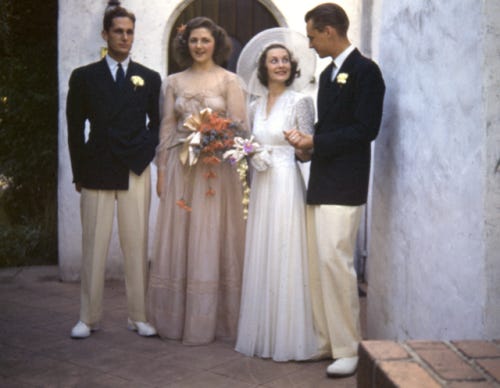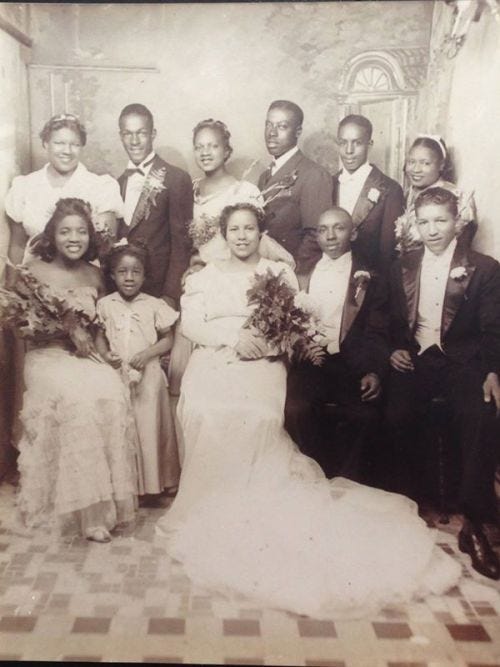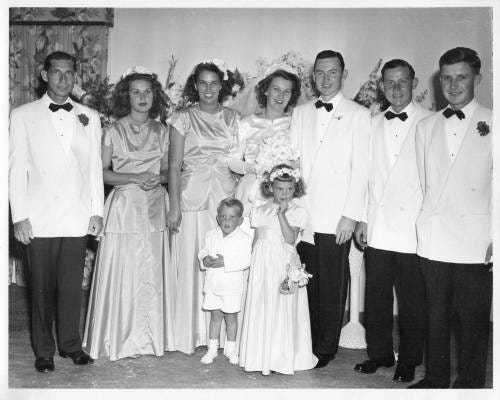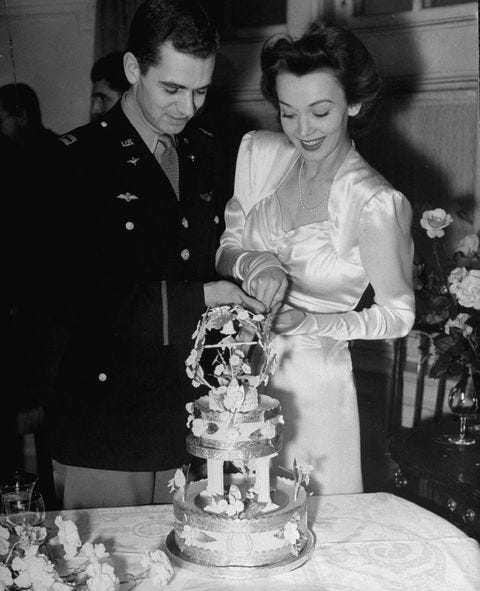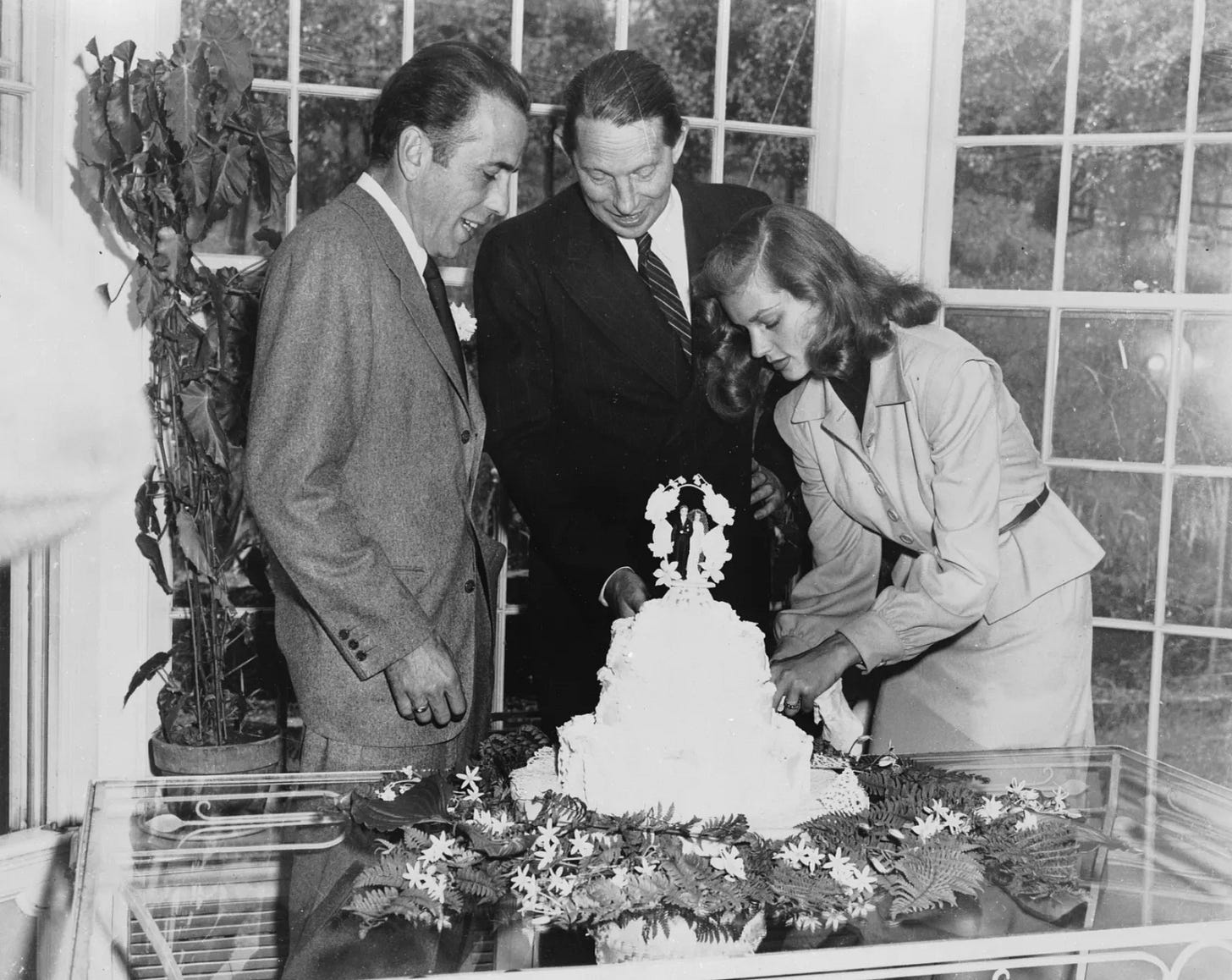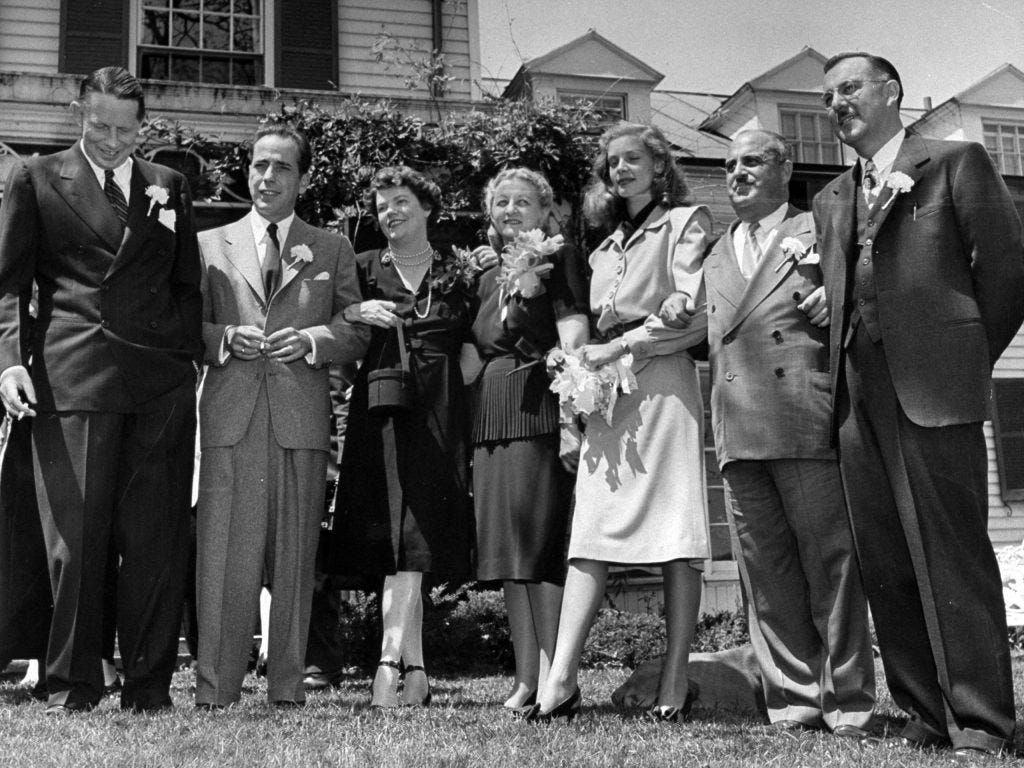The 1940s were a decade defined by World War II and its aftermath. The global conflict had a profound impact on every aspect of life, including weddings. Despite the challenges and uncertainties of wartime, couples found ways to celebrate their love and commitment. 1940s weddings were often characterised by a blend of practicality, patriotism, and heartfelt emotion, reflecting the times' extraordinary circumstances.
The Ceremony
With many men serving in the armed forces, weddings during the early 1940s were often hastily arranged before a deployment or during a brief leave. These ceremonies were typically small and intimate, held in local churches, registry offices, or even military chapels. The focus was on the emotional significance of the union rather than the extravagance of the event.
Patriotism was a common theme, with many couples incorporating elements that honoured the military. Brides sometimes wore dresses made from parachute silk, a practical yet symbolic choice. The ceremonies often included prayers for the soldiers and their families, adding a poignant layer to the vows exchanged.
Bride’s Ensemble
Wartime rationing and material shortages influenced bridal fashion in the 1940s. Brides had to be resourceful, often borrowing dresses or repurposing family heirlooms. Wedding dresses were typically simpler than in previous decades, featuring practical yet elegant designs. Fabrics such as rayon, cotton, and parachute silk were common, with many dresses sporting modest silhouettes and minimal embellishments.
When Princess Elizabeth married Philip Mountbatten in 1947, she had to save up coupons to buy her dress, as war rations were still in effect in the UK, and would be still in effect for some time.
Veils were usually short and practical, often handmade or passed down through generations. Brides frequently wore modest headpieces, such as floral crowns or simple combs. The bouquet, composed of local and seasonal flowers, added a touch of colour and natural beauty to the bride’s ensemble.
Groom and Attendants: Military Influence
The groom’s attire during the 1940s was often influenced by his military service. Many grooms wore their military uniforms, adding a sense of pride and honour to the ceremony. For those not in service, a simple suit or morning coat was typical, reflecting the era’s understated style.

Bridesmaids' dresses were modest and practical, often made from the same materials as the bride’s dress. Groomsmen, if present, wore uniforms or suits that complemented the groom’s attire. The overall look was coordinated yet practical, reflecting the realities of the time.
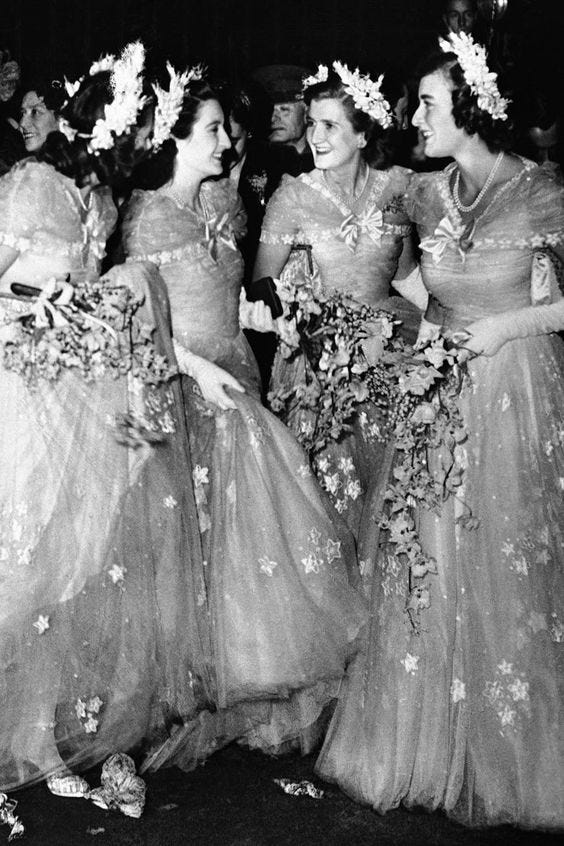
The Reception
Receptions in the 1940s were typically modest, influenced by wartime rationing and material shortages. Held in homes, church halls, or community centres, these gatherings focused on family and close friends. Decorations were often handmade, featuring simple yet heartfelt touches such as fresh flowers, candles, and homemade bunting.
Food was a central element, though the menu was dictated by rationing. Creative and resourceful, hosts often prepared homemade dishes using whatever ingredients were available. The wedding cake, while simpler than in other eras, remained a significant symbol. Often made with rationed ingredients, it represented the sweetness and hope of the future. Famously, in the British Royal Family, every wedding cake has to be a fruit cake that also contains rum and can be preserved for years afterwards. Pieces of the wedding cake are sometimes served during the christenings of the couple’s children.
Music and dancing were integral parts of the reception, providing a much-needed sense of normalcy and joy. Live bands or record players filled the air with popular wartime tunes and classic melodies, creating an atmosphere of celebration and unity.
Customs and Keepsakes
Despite the challenging circumstances, 1940s weddings retained many traditional customs. Wedding favours, though modest, were given to guests as tokens of appreciation. These might include small packets of sweets, homemade trinkets, or simple keepsakes crafted from available materials.
Photography played a crucial role in preserving memories. Couples often hired local photographers or relied on family and friends to capture candid moments and formal portraits. These photographs became cherished keepsakes, symbolising the love and hope shared by the couple. In some cases, couples recorded their wedding on film, creating a visual record that could be shared with loved ones unable to attend.
1940s weddings were characterised by a blend of practicality, patriotism, and deep emotional significance, reflecting the extraordinary circumstances of the time.




